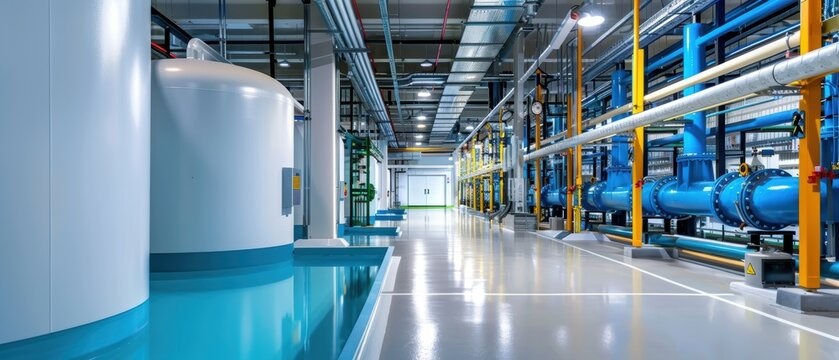
As India continues to evolve as a global industrial hub, the demand for safe and reliable water storage systems in various sectors has grown significantly. The country’s rapid industrialization, coupled with increasing concerns about environmental sustainability and health standards, has led to the introduction of more stringent water storage regulations. Industrial water storage systems in India are now adapting to these regulations to ensure compliance and to contribute to overall sustainability goals. This article explores how these systems are evolving to meet the new regulatory requirements.
1. Stricter Quality Standards for Water Storage
The Indian government has introduced enhanced regulations around water quality, aiming to address contamination risks and ensure the safe usage of water in industries such as pharmaceuticals, food processing, and manufacturing. The Bureau of Indian Standards (BIS) and the Central Pollution Control Board (CPCB) have outlined more specific parameters for water quality, requiring industries to improve filtration, purification, and monitoring processes. This has led to the integration of advanced water treatment technologies, including reverse osmosis (RO), ultraviolet (UV) sterilization, and deionization, into water storage systems.
Industrial facilities are now investing heavily in these technologies to meet the strict quality standards. Regular testing for chemical and microbial contaminants, such as bacteria, heavy metals, and total dissolved solids (TDS), is becoming a routine part of operations. With a strong focus on health and safety, industries are increasingly incorporating real-time monitoring sensors and automated systems that ensure water quality is constantly checked.
2. Increased Focus on Sustainability and Conservation
In response to both government regulations and global environmental trends, industries in India are also focusing on sustainability in their water storage practices. The new regulations encourage water conservation measures and the efficient use of water resources. Industries are being urged to reduce water wastage, recycle water, and explore rainwater harvesting methods.
Water storage systems are being redesigned to facilitate the collection and reuse of water. For example, industries are investing in systems that allow wastewater to be treated and repurposed for non-potable uses such as cleaning, cooling, or irrigation. These systems not only comply with the new regulations but also help businesses reduce water consumption and operational costs.
3. Improved Infrastructure and Maintenance Practices
To comply with the new regulations, industrial water storage infrastructure is undergoing significant upgrades. Older tanks are being replaced with more durable and corrosion-resistant materials, such as food-grade stainless steel or high-density polyethylene (HDPE), which help maintain water quality. Furthermore, industries are investing in smart storage tanks that feature built-in cleaning mechanisms, water level controls, and monitoring systems that ensure the water remains free of contamination and meets quality standards.
Preventive maintenance protocols are becoming a critical aspect of water storage systems. Industries are adopting routine inspection schedules to check for cracks, leaks, or signs of biofilm buildup in storage tanks. Periodic cleaning and disinfection practices are also becoming mandatory to ensure the water is safe and meets regulatory requirements.
4. Enhanced Recordkeeping and Documentation
The implementation of the new regulations has placed a strong emphasis on documentation and transparency. Industries are now required to maintain detailed records of water quality tests, maintenance logs, and the performance of water treatment systems. This data is essential for regulatory audits and is used to demonstrate compliance with water storage standards. With the help of digital solutions, industries can now track these records more efficiently, ensuring they remain readily accessible for regulatory authorities.
5. Employee Training and Awareness
As water storage systems adapt to new regulations, there is also a growing need for proper employee training. Workers must be educated on the latest safety protocols, water management technologies, and the importance of maintaining water quality standards. Regular training programs and workshops are helping staff stay updated on regulatory changes and best practices, which further ensures that compliance is maintained.
Conclusion
India’s evolving water storage regulations are driving industrial systems to become more sophisticated and sustainable. The focus on water quality, environmental conservation, and infrastructure maintenance is shaping the future of industrial water storage across sectors. As industries adapt to these changes, the implementation of advanced technologies, improved maintenance practices, and heightened awareness will ensure that industrial water storage systems in India not only meet regulatory requirements but also contribute to long-term environmental goals.


